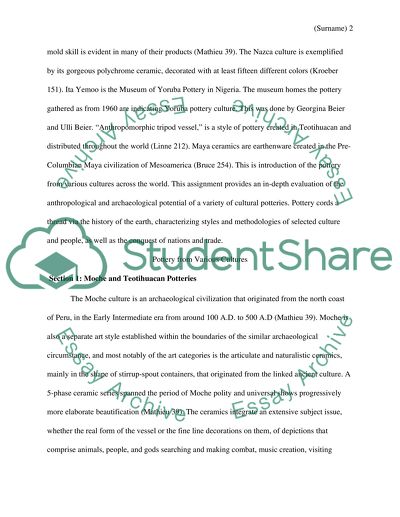Cite this document
(“Pottery from Various Cultures (Moche, Nazca, Yoruban, Teotihuacan, Research Paper”, n.d.)
Retrieved from https://studentshare.org/literature/1493668-pottery-from-various-cultures-moche-nazca-yoruban
Retrieved from https://studentshare.org/literature/1493668-pottery-from-various-cultures-moche-nazca-yoruban
(Pottery from Various Cultures (Moche, Nazca, Yoruban, Teotihuacan, Research Paper)
https://studentshare.org/literature/1493668-pottery-from-various-cultures-moche-nazca-yoruban.
https://studentshare.org/literature/1493668-pottery-from-various-cultures-moche-nazca-yoruban.
“Pottery from Various Cultures (Moche, Nazca, Yoruban, Teotihuacan, Research Paper”, n.d. https://studentshare.org/literature/1493668-pottery-from-various-cultures-moche-nazca-yoruban.


